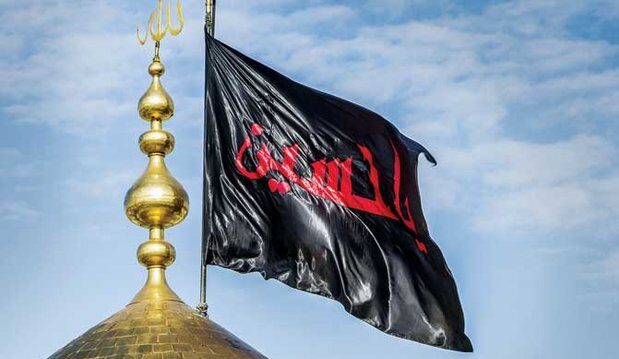WNAM REPORT: The Day of Ashura holds spiritual and historical significance for both Sunni and Shia Muslims.
For the Sunni majority, the day is observed with fasting and special prayers in mosques, signifying its sacred nature.
For Shia Muslims, Ashura is a day of mourning, commemorating the tragic anniversary of the martyrdom of Imam Hussain (AS), the grandson of Prophet Muhammad, during the Battle of Karbala.
Shia preachers deliver sermons and recount the history of the Battle of Karbala. Some also recite poetry related to the life of Imam Hussain (AS), emphasizing his virtues.
In many parts of Iraq and Iran, large public plays, marches, and processions are held in front of thousands of people who gather to mourn and commemorate the event.
During the period of Muharram, Shia worshippers often wear black as a symbol of mourning and sadness. Many will take this time as an opportunity to derive lessons from Imam Hussain’s life.
The most significant event that occurred in the month of Muharram was the Battle of Karbala, which took place in Iraq in Muharram 61 AH.
The battle was fought between a small army consisting of the family and companions of Imam Hussain (AS), and a much larger army sent by Yazid ibn Muawiyah, the Umayyad Caliph at that time.

The battle took place because Imam Hussain (AS) refused to pledge allegiance to Yazid ibn Muawiyah, who was tyrannical and had taken it upon himself to assume the Muslim leadership after the death of his father.
On the 10th Muharram, the Day of Ashura, Imam Hussain (AS) was brutally martyred by the enemy camp. This is a very significant day in Islamic history as Imam Hussain (AS) and 72 other martyrs, mainly consisting of the male members of the family of the Prophet (PBUH) all nobly sacrificed their lives as a stand against oppression and to preserve Islam.
The Shia community considers the martyrdom of Imam Hussain (AS) to be a symbol of humanity’s struggle against injustice, tyranny, and oppression.
Imam Hussain (AS) was extremely close to and precious to the Holy Prophet (SAW). As a child, he would climb on the Prophet (SAW)’s back freely during prayer, and was beloved by him.
The Prophet Muhammad used to fast on Ashura in Mecca, where it became a common tradition for the early Muslims.
But for the Shia, it is also a major religious event to commemorate the martyrdom of Imam Hussain (AS) who died at the Battle of Karbala in 680 AD.
In the aftermath of The Battle of Karbala, Yazid’s army held the Imam’s women and children captive and marched them from Iraq to Syria. His sister was the one who safeguarded the uprising’s principles to reflect the essential role Islam set for women in any revolutionary movement.
Sayedah Zainab defied Yazid in his own courtyard in her famous sermons, which unnerved even his closest allies, and imposed his heinous massacre and violations.
Every year since then, many Shias mark Ashura by performing a pilgrimage to the mausoleum of Imam Hussain (AS), which is traditionally held in his tomb in Karbala.
More than 1,340 years after Imam Hussain’s martyrdom, Baghdad, Tehran, Islamabad, and other major cities were adorned with symbols of Shia piety and repentance: red flags for Imam Hussain’s blood, symbolic black funeral tents and black dresses for mourning, processions of men and boys expressing sadness in the ritual of chest-beating.
The Battle of Karbala, absolutely, has triggered a series of uprisings against tyrannical regimes and imperialist forces throughout history. Furthermore, the Ashuraian resistances have obviously proven that each hegemonic power would have an eventual demise.
Today, pilgrims, from all across the world, pay tribute to Imam Hussain’s courageous stand and regard him as a symbol of resistance who stood for humanitarian values of sacrifice, freedom, and dignity.

